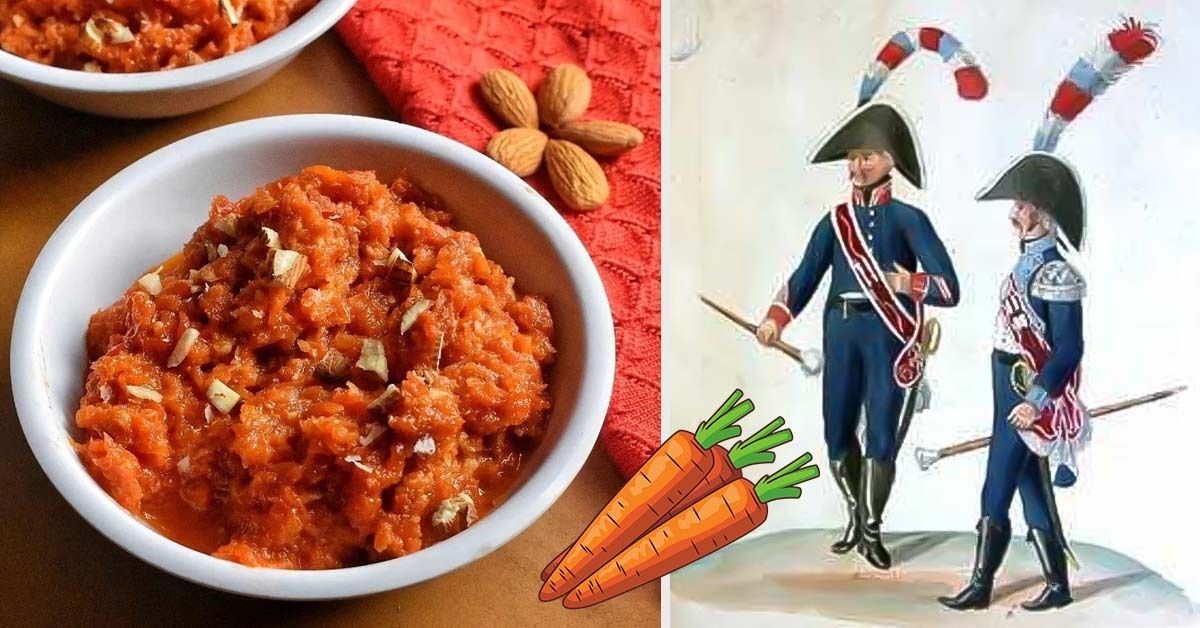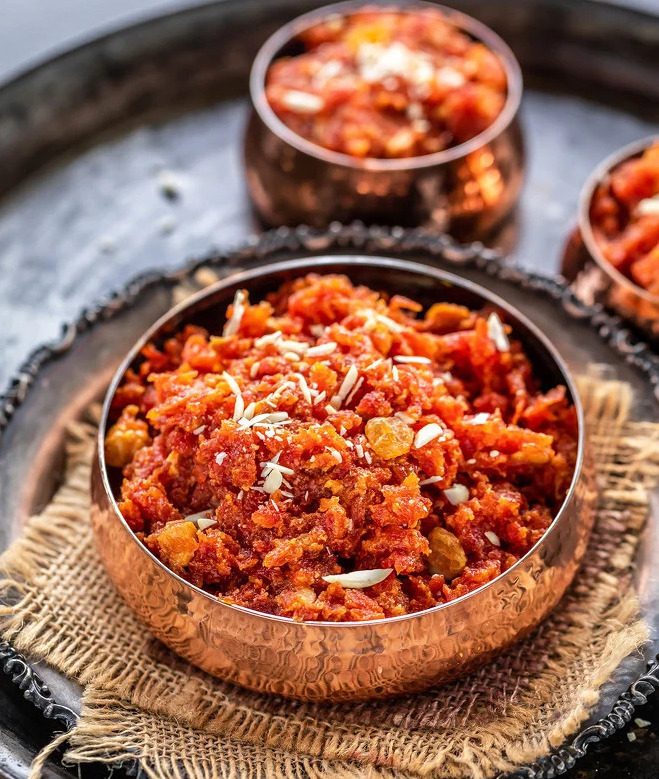Love Gajar Ka Halwa? Here’s Its Sweet History, Unique Recipes & Cooking Tips
Looking for an easy recipe for gajar ka halwa? We have the perfect one, along with a fascinating tale from history to tease your tastebuds.

If there was an award for the dish with the most coloured history, it would undoubtedly be presented to gajar ka halwa. This dessert has, for years, occupied a sweet spot at the gastronomic intersection of a wide variety of tales, each emerging from a different period in history.
Today, we explore these stories.
But as we delve into them, we encourage you to sit down with a bowl of this timeless winter favourite. As the first spoon of the orange halwa hits your tastebuds, feel the riot of flavours erupting in your mouth, each bite a celebration in itself.
Halwas in Indian homes often take on the role of family members who drop in unannounced but are always welcome. No matter the occasion, their surprise visits are much-awaited. So, whether it is moong dal halwa, badam halwa, sooji halwa or our favourite gajar ka halwa, each has a reserved spot at the family table.
As we dunk into the history of the great halwa, the most popular tale is of its name. The word halwa comes from the Arabic word ‘hulw’ which translates to ‘sweet’.
The word’s first appearance in the English language dates back to 1850. In fact, it is these Arabic origins that back the theory that halwa was a dish that came from Persia to India. One of the first to acknowledge this was ‘Guzishta Lucknow’ written by Abdul Halim Sharar, a 20th-century author and historian.
Recipes of halwa can be traced to the legendary Kitab al-Tabikh (The Book of Dishes), a 13th-century Arabic text. Here, Muḥammad ibn al-Ḥasan Ibn al-Karīm mentioned different recipes of halwa. Cut to the 16th century when one of Akbar’s court historians, Abul Fazl mentioned — in the Ain-i-Akbari — halwa as one among the repertoire of dishes prepared for the ruler whilst he abstained from meat.
But while you digest these origins of the dessert, there are still other versions.
While some argue that the Ottoman Empire also known as the Turkish Empire is credited with making halwa popular — with the sultanate reserving a special kitchen the ‘Helvahane’ for the sweet — others say it was the Byzantine Empire in the 12th century that should be credited.
This theory of the halwa’s entry into the world between the 13th and 16th centuries is backed by Chicago-based food historian Colleen Taylor Sen in her book ‘Feasts and Fasts’. Here, she writes, “Halwa arrived in India with the advent of the Delhi Sultanate, gaining popularity from the early thirteenth to the mid-sixteenth century.”
From these early roots, the sweet dish has branched out into numerous versions, each the pride of a different city in India. For instance, the banana halwa of coastal Karnataka, the Tirunelveli halwa of the South, the Cholar dal halwa of West Bengal, gosht halwa made with lamb mince, mohanlal halwa of Gujarat, kada prasad made by the Sikh community, and the jauzi halwa of Lucknow.

As for the story of how the gajar ka halwa came to be, the Dutch are credited for this winter special. It is the result of carrots, indigenous to Afghanistan, being brought to India by the Dutch in the 17th century as the latter wanted to pay tribute to William III, the Prince of Orange.
The root vegetable became so popular in Punjab on its advent into the region, that it was added to almost every dish. Soon, it made its way into the dessert scene and thus was born the gajar ka halwa.
The tradition is followed to date.
Come winter, and carrots find themselves grated and dunked into milk where they slowly simmer and mix with sugar and ghee, only to land in a bowl and be cherished by one and all.
You’ll be surprised to know that while gajar ka halwa is tied to its orange hues, in Lucknow it is the black version that finds fame. Made with black carrots that are said to provide a warming effect, this halwa is equally, if not more, delicious.
For those of you who cannot wait to dig into this dessert, here’s a recipe by Chef Sanjeev Kapoor that you can try.
Ingredients
- 3 tbsp ghee
- 10 grated carrots
- 2 cups milk
- ¼ tsp cardamom powder
- 1 cup grated khoya
- ¾ cup sugar
- 2 tbsp blanched and sliced almonds
- 2 tbsp chopped cashew nuts
- 15 raisins
Method
Step 1: Heat 3 tablespoons of ghee.
Step 2: Add 10 grated carrots and sauté for 5 minutes.
Step 3: Add 2 cups milk, ¼ teaspoon cardamom powder, and cook till the carrots are soft.
Step 4: Add 1 cup grated khoya and ¾ cup sugar and cook till sugar melts.
Step 5: Garnish with 2 tablespoons blanched and sliced almonds, 2 tablespoons chopped cashew nuts and 15 raisins. If you found our stories insightful, informative, or even just enjoyable, we invite you to consider making a voluntary payment to support the work we do at The Better India. Your contribution helps us continue producing quality content that educates, inspires, and drives positive change. Choose one of the payment options below for your contribution- By paying for the stories you value, you directly contribute to sustaining our efforts focused on making a difference in the world. Together, let’s ensure that impactful stories continue to be told and shared, enriching lives and communities alike. Thank you for your support. Here are some frequently asked questions you might find helpful to know why you are contributing?

Step 6: Serve hot!
(Edited by Pranita Bhat)
Sources
How the sweet dish halwa came to India and grew regional variations by Scroll, Published on 13 July 2022.
Gajar Ka Halwa- Dipped In History by Slurrp, Published on 28 November 2022.
The fascinating story of ‘Halwa’ by Times of India, Published on 17 July 2021.
This story made me
-
97
-
121
-
89
-
167












